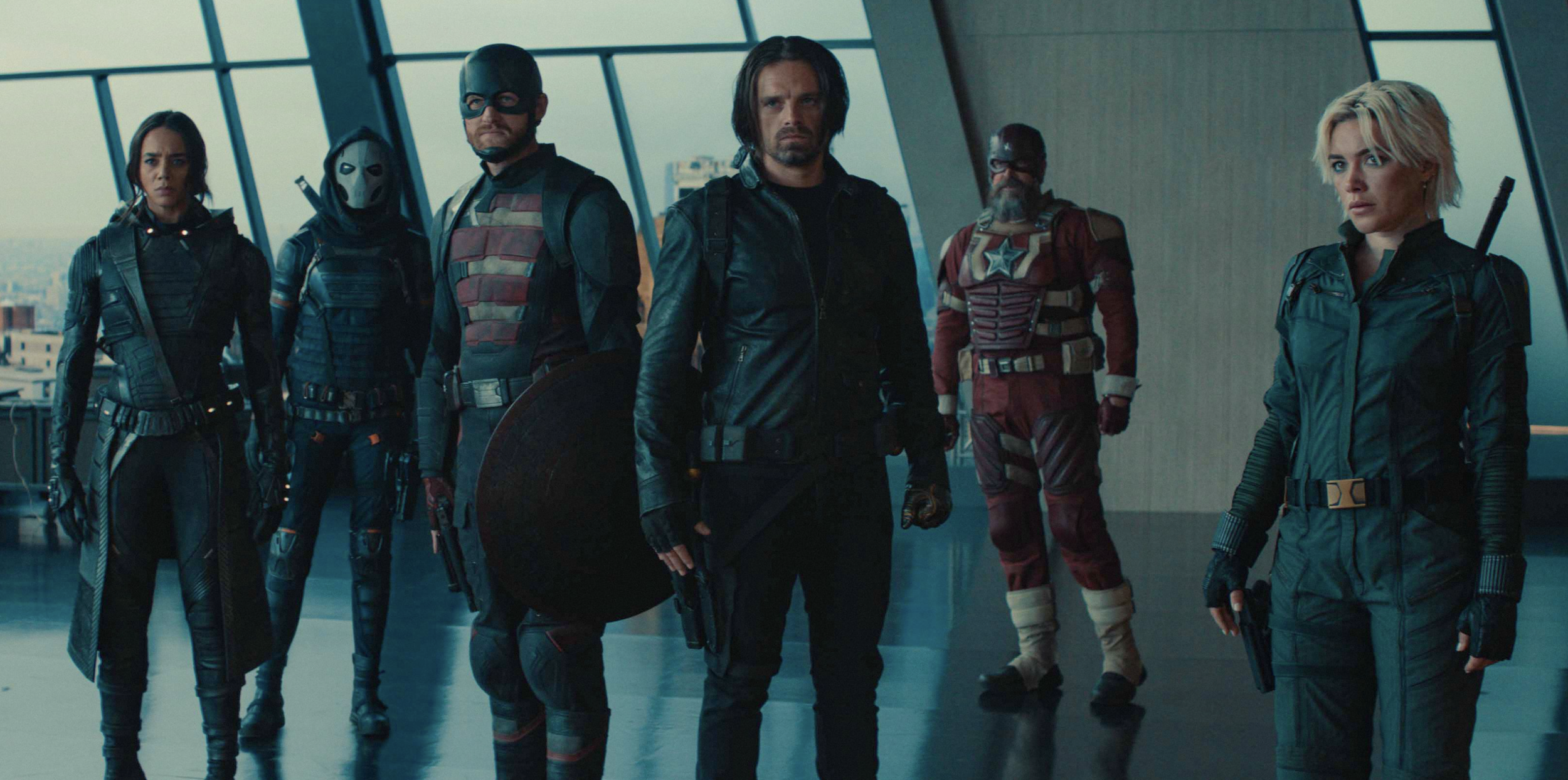THUNDERBOLTS*
Directing: B
Acting: B+
Writing: B
Cinematography: B+
Editing: B
Special Effects: B
Thunderbolts*, like countless other Marvel Studios films before it, is both overlong and overstuffed, trying to do too much, because even after years of being exhausted by it, these movies still expect to trade on audiences’ intricate knowledge of every other wild thing that has ever happened in now-33 films in the Marvel Cinematic Universe. Who has time for that shit?
Furthermore, there are no aliens in this movie. I only mention this because there are aliens in other MCU movies, and this one has a very brief, single line that references “when the aliens came.” But what if you’re watching this movie and you’ve never seen any of those other, “alien” ones? You’d just be left thinking: Huh?
None of the original Avengers are in Thunderbolts* either (spoiler alert!). What happened to them all, anyway? How many years ago was that? Some sacrificed themselves, I think? Some simply retired, like, to a farm or something? I honestly don’t remember, and it’s because frankly I don’t care. I’m just over here waiting for another one of the rare MCU films that actually manages a successful pivot, like Black Panther or Logan. I even liked Black Widow more than I expected to—even if it’s not quite in the same league as the aforementioned films—which is the very reason I found myself interested in Thunderbolts*, which serves as a quasi-sequel. Florence Pugh and David Harbour both return as Yelena Belva and Alexei Shastakov (“The Red Guardian”), and they are delightful characters.
They do get a bit darker here, as the themes of this film, as directed by Jake Shreier, takes a bit of a left turn into metaphors for mental health and depression. As someone who does not live with depression, I cannot truly speak to how successful the film is at this. It’s easy to imagine some people feeling like it trivializes their experiences and their struggles. Others might find it makes them feel seen. The inevitable climactic battle here takes place inside the mind of a supervillain who is a huge danger to himself and the world, but is also deeply empathetic—an unusual choice that I appreciate. Even when it doesn’t fully work, I can always respect a big swing.
Of course, the plotting also gets unnecessarily convoluted. But, if it results in by far the biggest role in an MCU film by Julia Louis-Dreyfus as the perennially dubious CIA Director Valentina Allegra de Fontaine, I’m all for it. Thunderbolts* could have taken a few action sequence cuts and added more of Valentina. Nobody would have complained.
Not that I have any major complaints about Thunderbolts* as it stands. This ragtag team of misfit criminals-turned-heroes, which along with Yelena and Alexei, includes Bucky Barnes (Sebastian Stan), John Walker (Wyatt Russell), Antonia Dreykov (Olga Kurylenko), Ava Starr (Hannah John-Kamen), and maybe also Robert Reynolds (Lewis Pullman), have chemistry. They get conveniently thrown together when Valentina sends them all to assassinate each other in a giant vault on top of a mountain where she plans to incinerate all the evidence of a shady operation which, naturally, ultimately produces our supervillain.
As for the supervillain, comic book readers will likely recall why he is referred to as both “Sentry” and “The Void.” It’s easy to feel ambivalent about this character, and it’s difficult to gauge how deliberately Schreier makes that part of the point. I will say this: after countless superhero movies following the exact same beats over and over, in which a CGI-laden mega-battle occurs to save the entire planet or the entire galaxy or hell, even the universe (how about multiverses!), it’s refreshing to see one of these movies dial back the stakes and ground them, even if in this case they are largely wrapped in uncertainly executed metaphorical psychology.
Whatever turns it takes, Thunderbolts* is consistently and undeniably fun. It’s a bit drab visually, lots of shades of grey in its color palate (perhaps a deliberate choice for characters who struggle between inner light and inner darkness), and the visual effects are serviceable. Black Widow was a better movie, and the absence of Scarlett Johansson is keenly felt, but it’s also nice to spend more time with a couple of other great characters is introduced to us. The new characters feel a bit expendable overall, really, but it’s the presence of the special ones that at least slightly tips the scales in its favor.
*Made you look!










